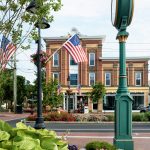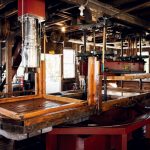On a cold winter Saturday, I did something you can do at only one place on earth — climb aboard the last surviving wooden whaling ship. The 1841 square-rigged
Charles W. Morgan has long been Mystic Seaport’s prime attraction, but nearly everyone who tramps along the deck or explores the dark recesses below does so in summer.
“We get 80 percent of our visitors in three months,” laments our guide. “We have to fight the stereotype that we’re just an outdoor museum.”
Make no mistake: Mystic Seaport deserves its warm-weather devotees. Its 17 acres hug the shore of the Mystic River, and you can happily linger for hours, basking in the sun, strolling from one maritime treasure to another, letting today’s world slide away as you get a feel for the seafaring life from centuries past.
The seaport experience in winter is more intimate, more personal. You may go home more moved and more impressed than ever. On this day, there are only some 50 others sharing the exhibits with me. With few distractions, I notice things I might well have missed — Captain Wendell’s doll bed, for instance, part of the indoor Voyages: Stories of America and the Sea exhibit.
In 1863, George Blunt Wendell, 32-year-old master of the clipper ship
Galatea, over the course of a long sea voyage painstakingly carved this doll bed for his young daughter. When he finally reached New York, his home shore, he carried it off the ship, not knowing his daughter had died a month earlier. In that one object, in those few words that describe the bed, I feel the weight of his grief and the unbearable silences that all seafaring men endured in those years past.
In the Black Hands, Blue Seas exhibit (through March 2007) that honors the role of black Americans in maritime history from the early days of sailing and whaling through the 20th century, a young woman from the seaport sings the sea chanteys that were once sung by apprehensive whalers to calm themselves as they rowed toward the whales. We are an audience of three, and it feels like a private concert. I stay at the seaport until winter’s twilight, and as I walk back to town, I can see the
Charles W. Morgan rocking ever so gently, the songs of its long-dead sailors still in my ears.
— Mel Allen
Mystic Seaport — The Museum of America and the Sea, 75 Greenmanville Ave., Mystic, CT. 888-973-2767, 860-572-0711. mysticseaport.org







